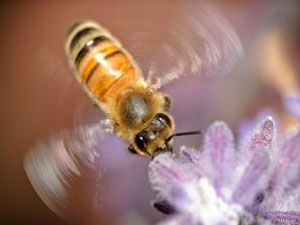《Nature》目录要览:2010-02-11出版
时间:2010-02-19 阅读: 我要评论:
《Nature》目录要览:2010-02-11出版
封面故事:4000多年前一位古人的基因组
Ancient human genome sequence of an extinct Palaeo-Eskimo
研究人员首次从一位古人的身体组织获得了一个近乎完整的核基因组的序列。该基因组来自在距今约4000年前的永久冻土中保存的毛发,而毛发则来自一位男性古爱斯基摩人,他是已知最早在格林兰定居的人类文化的一名成员。功能性单核苷酸多态性(SNP)评估方法被用来确定这个人可能的表型特征,他属于一种被称为“Saqqaq”的文化,对该群体研究人员只收集到痕量的人类残骸。他们所做的分析为人类在距今大约5500年前从西伯利亚向“新世界”的一次迁徙活动提供了证据(这次迁徙活动独立于产生了现代美洲土著人和因纽特人的那次迁徙)。本期封面所示为其基因组被测序的那个人的一幅素描像(由Nuka K. Godtfredsen绘制),绘制依据是SNP 评估结果及与其最接近的当代人的形象。(Article p, 757; News & Views; www.nature.com/podcast)
设定未来气候变化情景的新方法(Setting the scenes)
The next generation of scenarios for climate change research and assessment
在评估人类活动对气候的影响方面所存在的不确定性时,气候学家利用通过模型预测出的情景来对未来可能会是怎样做出比较可信的描述。设定这些情景的传统方法是一个很费时间的、依次进行的过程,每个学科轮流为这个过程增添数据,同时也增加其复杂性。正如Richard Moss及其同事在一篇“Perspectives”评论文章中所解释的那样,气候变化研究人员现在已经确立了一个协调的并行过程,该过程将情景设定工作、未来预测工作以及对其影响进行评估的工作整合在了一起。这些所谓的“下一代”情景应能让我们对有关缓和气候变化及适应气候变化的方案做出更快、更严格的评估。(Perspectives p. 747)
二穗短柄草基因组完成测序(Genome of a model grass)
Genome sequencing and analysis of the model grass Brachypodium distachyon
二穗短柄草(Brachypodium distachyon)是地中海和中东的一种本地野生草本,现在其基因组已完成测序。这是具有重要经济价值的早熟禾亚科基因组被测序的第一个成员(这个亚科的成员还包括小麦和大麦)。用短柄草、水稻和高粱基因组进行的比较基因组研究,为了解草本基因组演化提供了线索,并且还将有助于将来对大的、复杂的基因组(如小麦的基因组)进行分析。这个基因组序列的获得应有助于将易于培育、适于基因操纵的短柄草确立为开发新能源作物和粮食作物的模型。(Article p. 763)
苯(并)二氮的上瘾机制(Benzodiazepine addiction)
Neural bases for addictive properties of benzodiazepines
精神刺激药物苯(并)二氮在临床和娱乐方面被广泛使用,虽然它们短期被认为是安全和有效的,但对某些人来说却容易上瘾。迄今所研究的所有成瘾药物都有增加中脑边缘区域中多巴胺水平、触发腹侧被盖区中适应性突触可塑性的作用。一项新的研究表明,苯(并)二氮(通过与GABAA受体结合发挥作用)也能通过对附近中间神经元中含alpha-1的GABAA受体的正调节增加腹侧被盖区中多巴胺神经元的激发。这种作用反过来又会触发多巴胺神经元中由药物引发的突触可塑性。该研究数据还表明,不激发alpha-1受体的亚单元选择性苯(并)二氮可能不会让人上瘾。(Article p. 769; News & Views)
气体浓度对恒星形成的影响(Gas supply to the stars)
High molecular gas fractions in normal massive star-forming galaxies in the young Universe
恒星形成需要存在冷的分子气体,它们只占银河系和附近星系总质量的一小部分,那里每年只形成少量新的恒星。为了确定遥远巨大星系中发生的快速恒星形成是反映了冷气体供应量较大、还是反映了恒星形成过程效率更高,研究人员对两个宇宙时代大质量恒星中的气体浓度进行了分析,这两个宇宙时代在红移值大约为1.2和2.3处,当时的宇宙分别是其目前年龄的40%和24%。结果显示,遥远的恒星形成星系的确富含气体,而且恒星形成效率并不强烈依赖于宇宙时代。冷气体相对于星系总质量的平均比例在遥远星系中要比在当今巨大螺旋形星系中高三倍到十倍。(Letter p. 781; News & Views)
有机铁电现象新发现(Ferroelectricity goes organic)
Above-room-temperature ferroelectricity in a single-component molecular crystal
铁电性化合物在实践应用中有一系列有用的特性,包括在电场中的极性反转、温度敏感性及将机械应力转换成电力的能力。人们一般假设,铁电现象是罕见的,在有机化合物中最差,但Horiuchi等人现在却报告了高于室温的铁电现象的发现,在有机晶体巴豆酸(黑色染料的一个成分)中有相对较高的极化。这些特性在这一简单分子的晶体形式中并不是一下子就能显现出来,但它们在施加一个较小的电场后便会出现,该电场能诱导一种分子-拓扑酮-烯醇转化。这一发现提出一个可能性:有机铁电体也许要比人们以前所想的丰富得多。(Letter p. 789)
地球外核中的“纬向流”(Zonal flow in Earth’s core)
Zonal flow formation in the Earth’s core
由于“纬向流”在湍急的对流体系如巨型行星的大气层和地球的海洋中普遍存在,所以它们可能也存在于地球的外核中,那里被认为处于一种湍急状态。Takehiro Miyagoshi及其同事对“地球发电机”进行了数值模拟,其所采用的粘度低于以前大部分模拟工作所采用的粘度。他们发现了“核流”的一个新的对流体系,它表现出一个双重结构——内部层状径向卷流,它们被向西流动的圆柱形“纬向流”包围。因此,地球外核的对流也许与行星大气层和海洋中的对流比人们以前预计的更为相似。(Letter p. 793)
对软体动物化石的再认识(A hard look at soft fossils)
Non-random decay of chordate characters causes bias in fossil interpretation
我们关于脊椎动物演化中最早阶段的知识,仅限于我们能从早期脊索动物留下的化石中收集到什么。由于这些动物是软体的,没有骨头和甲壳,所以它们留下的东西非常少,主要是相对较少的、保存极为完好的标本。对这些化石进行解读是有困难的。现在,仅有这些化石似乎还不够,对文昌鱼和幼七鳃鳗(早期软体脊索动物亲缘关系最近的现存物种)的现代标本的腐烂所做的一项研究表明,腐烂过程中典型脊索特征的丢失不是随机的,在种系发生方面更有信息价值的特征最易丢失。已经固化到化石记录中的这种异常情况,会导致人们偏向于将脊索动物化石在演化树上放错位置。如果这种由腐烂导致的偏见广泛存在,我们从保存极为完好的软组织的化石记录所了解到的很多重要演化事件将需要认真的重新评估。(Letter p. 797; News & Views)
精子也有认亲的本领(Competitive sperm)
Competition drives cooperation among closely related sperm of deer mice
有关精子之间的竞争和合作都已有很多研究,但不同精子是否能将它们应当与之合作的“亲兄弟”跟它们不应与之合作的“非亲兄弟”区分开来?Heidi Fisher 和 Hopi Hoekstra发现,当两个种的鹿鼠的精子相混时,它们优先与来自其自己所属种的精子聚集。当同一个种的不同个体混在一起时,来自单配(即一雌一雄)种的精子不区分“亲兄弟”与“非亲兄弟”,而来自混交种的精子则进行这种区分。(Letter p. 801)
昆虫利用地球磁场导航的机制(Insect navigation)
Animal cryptochromes mediate magnetoreception by an unconventional photochemical mechanism
动物何以能够利用地球磁场导航是人们当前非常感兴趣的一个问题。人们知道,UV-A/蓝光光受体“隐花色素”(Cry)调控果蝇依赖于光的磁感应。现在,Steven Reppert及其同事利用基因操纵发现,来自“王蝶”的两种“隐花色素”(分别是与果蝇相似的Cry1 和与脊椎动物相似的 Cry 2)能够恢复缺失cry基因的果蝇的磁感应。这表明,两种类型的Cry在迁徙的“王蝶”体内都能通过一个目前仍不清楚的机制感应磁场,而且光敏性也以某种方式参与到了其中。(Letter p. 804)
流感病毒复制所需的宿主因子
Human host factors required for influenza virus replication / Genome-wide RNAi screen identifies human host factors crucial for influenza virus replication
本期Nature上发表的两项全基因组RNA干涉筛选研究,发现了“甲流”病毒在肺上皮细胞系中复制所需的人类宿主因子。König等人发现了流感病毒复制所需的295个宿主基因。其中,219个是野生型病毒高效生长所需的,23个是病毒进入所需的。Hung等人发现了影响病毒复制的287个宿主基因。 一项独立分析证实,其中168个基因(占59%)要么抑制H1N1流感病毒(119个基因),要么抑制当前流行的起源于猪的“甲流”病毒(121个基因),重叠率为60%。 这些研究应能为用于治疗流感病毒感染的、由宿主因子引导的抗病毒药物提供几个潜在目标。(Letters pp. 813, 818)
----------------------
NEWS AND VIEWS
----------------------
Evolutionary biology: Face of the past reconstructed pp739-740
DNA is particularly well preserved in hair [mdash] enabling the
genome of a human to be sequenced, and his ancestry and appearance
to be determined, from 4,000-year-old remains.
David M. Lambert and Leon Huynen
doi:10.1038/463739a
http://www.nature.com/nature/journal/v463/n7282/full/463739a.html
50 & 100 years ago p740
doi:10.1038/463740b
http://www.nature.com/nature/journal/v463/n7282/full/463740b.html
Nuclear physics: Weighing up the superheavies pp740-741
To discover superheavy elements and study their properties, we need
to know the masses of the isotopes of elements heavier than uranium.
Weighing these isotopes in an electromagnetic trap has now become possible.
Georg Bollen
doi:10.1038/463740a
http://www.nature.com/nature/journal/v463/n7282/full/463740a.html
Palaeontology: Decay distorts ancestry pp741-743
Experiments with simple chordate animals show how decay may make
the resulting fossils seem less evolved. The consequence is to
distort evidence of the evolution of the earliest vertebrates and
their precursors.
Derek E. G. Briggs
doi:10.1038/463741a
http://www.nature.com/nature/journal/v463/n7282/full/463741a.html
Cosmology: Census at a distance p742
Ana Lopes
doi:10.1038/463742a
http://www.nature.com/nature/journal/v463/n7282/full/463742a.html
Neuroscience: Lack of inhibition leads to abuse pp743-744
Chronic drug use can lead to addiction, which is initiated by
specific brain circuits. The mystery of how one class of drugs, the
benzodiazepines, affects activity in this circuitry has finally been solved.
Arthur C. Riegel and Peter W. Kalivas
doi:10.1038/463743a
http://www.nature.com/nature/journal/v463/n7282/full/463743a.html
Parkinson's disease: Mitochondrial damage control pp744-745
Defects in mitochondria are implicated in Parkinson's disease. Study
of a quality-control pathway involving the proteins PINK1 and Parkin
provides further clues about the mechanism involved.
Asa Abeliovich
doi:10.1038/463744a
http://www.nature.com/nature/journal/v463/n7282/full/463744a.html
Astrophysics: Less greedy galaxies gulp gas pp745-746
The cool molecular gas from which stars form has been detected in
relatively ordinary faraway galaxies. The results point to a continuous
fuelling of gas into the star-forming guts of assembling galaxies.
Andrew Blain
doi:10.1038/463745a
http://www.nature.com/nature/journal/v463/n7282/full/463745a.html
----------------------
PERSPECTIVES
----------------------
The next generation of scenarios for climate change research and assessment pp747-756
Richard H. Moss et al.
doi:10.1038/nature08823
Abstract: http://www.nature.com/nature/journal/v463/n7282/abs/nature08823.html
Article: http://www.nature.com/nature/journal/v463/n7282/full/nature08823.html
----------------------
ARTICLES
----------------------
Ancient human genome sequence of an extinct Palaeo-Eskimo pp757-762
The first genome sequence of an ancient human is reported. It comes from
an approximately 4,000-year-old permafrost-preserved hair from a male from
the first known culture to settle in Greenland. Functional single-nucleotide
polymorphism (SNP) assessment is used to assign possible phenotypic
characteristics and high-confidence SNPs are compared to those of
contemporary populations to find those most closely related to the individual.
Morten Rasmussen et al.
doi:10.1038/nature08835
Abstract: http://www.nature.com/nature/journal/v463/n7282/abs/nature08835.html
Article: http://www.nature.com/nature/journal/v463/n7282/full/nature08835.html
Genome sequencing and analysis of the model grass Brachypodium distachyon
pp763-768
The genome of the wild grass Brachypodium distachyon (Brachypodium), a
member of the Pooideae subfamily, is sequenced. The Pooideae are one of
three subfamilies of grasses that provide the bulk of human nutrition and
may become major sources of renewable energy. Availability of the genome
sequence should help establish Brachypodium as a model for developing
new energy and food crops.
doi:10.1038/nature08747
Abstract: http://www.nature.com/nature/journal/v463/n7282/abs/nature08747.html
Article: http://www.nature.com/nature/journal/v463/n7282/full/nature08747.html
Neural bases for addictive properties of benzodiazepines pp769-774
Benzodiazepines, such as valium, are used both in clinics and for recreational
purposes, but lead to addiction in some individuals. Addictive drugs increase
the levels of dopamine and trigger synaptic adaptations in the mesolimbic
reward system, but the neural basis for the addictive nature of
benzodiazepines remains elusive. Here, they are shown to increase
firing of dopamine neurons in the ventral tegmental area through GABAA
receptor activation in nearby interneurons.
Kelly R. Tan et al.
doi:10.1038/nature08758
Abstract: http://www.nature.com/nature/journal/v463/n7282/abs/nature08758.html
Article: http://www.nature.com/nature/journal/v463/n7282/full/nature08758.html
Rfx6 directs islet formation and insulin production in mice and humans
pp775-780
Pancreatic [beta]-cells release insulin, which controls energy homeostasis
in vertebrates, and its lack causes diabetes mellitus. The transcription
factor neurogenin 3 (Neurog3) initiates differentiation of [beta]-cells
and other islet cell types from pancreatic endoderm; here, the transcription
factor Rfx6 is shown to direct islet cell differentiation downstream of
Neurog3 in mice and humans. This may be useful in efforts to generate
[beta]-cells for patients with diabetes.
Stuart B. Smith et al.
doi:10.1038/nature08748
Abstract: http://www.nature.com/nature/journal/v463/n7282/abs/nature08748.html
Article: http://www.nature.com/nature/journal/v463/n7282/full/nature08748.html
----------------------
LETTERS
----------------------
High molecular gas fractions in normal massive star-forming galaxies in
the young Universe pp781-784
Stars form from cold molecular interstellar gas, which is relatively rare
in the local Universe, such that galaxies like the Milky Way form only a few
new stars per year. However, typical massive galaxies in the distant Universe
formed stars much more rapidly, suggesting that young galaxies were more rich
in molecular gas. The results of a survey of molecular gas in samples of
typical massive star-forming galaxies when the Universe was 40% and 24% of
its current age now reveal that distant star-forming galaxies were indeed gas rich.
L. J. Tacconi et al.
doi:10.1038/nature08773
Abstract: http://www.nature.com/nature/journal/v463/n7282/abs/nature08773.html
Article: http://www.nature.com/nature/journal/v463/n7282/full/nature08773.html
Direct mass measurements above uranium bridge the gap to the island of
stability pp785-788
The difference between the mass of an atom and the sum of its building
blocks (the binding energy) is a manifestation of Einstein's famous relation
E = mc2. Superheavy elements have been observed, but our present knowledge of
the binding energy of these nuclides is based only on the detection of their
decay products, although they represent the gateway to the predicted 'island
of stability'. Here, direct mass measurements of trans-uranium nuclides are
reported, providing reliable anchor points en route to the island of stability.
M. Block et al.
doi:10.1038/nature08774
Abstract: http://www.nature.com/nature/journal/v463/n7282/abs/nature08774.html
Article: http://www.nature.com/nature/journal/v463/n7282/full/nature08774.html
Above-room-temperature ferroelectricity in a single-component molecular
crystal pp789-792
Ferroelectrics are electro-active materials that can store and switch their
polarity, sense temperature changes, interchange electric and mechanical
functions, and manipulate light. Subtle changes in the topology of certain
chemical bonds have long been identified as a possible route for achieving
ferroelectricity in organic molecular crystals. Ferroelectricity above room
temperature is now demonstrated by applying an electric field to coherently
align the molecular polarities in crystalline croconic acid.
Sachio Horiuchi et al.
doi:10.1038/nature08731
Abstract: http://www.nature.com/nature/journal/v463/n7282/abs/nature08731.html
Article: http://www.nature.com/nature/journal/v463/n7282/full/nature08731.html
Zonal flow formation in the Earth/'s core pp793-796
Zonal jets are common in nature and are spontaneously generated in turbulent
systems. Because the Earth's outer core is believed to be in a turbulent state,
it is possible that there is zonal flow in the liquid iron of the outer core.
By investigating numerical simulations of the geodynamo with lower viscosities
than most previous simulations have been able to use, a convection regime of
the outer core is now found that has a dual structure comprising inner,
sheet-like radial plumes and an outer, westward cylindrical zonal flow.
Takehiro Miyagoshi, Akira Kageyama and Tetsuya Sato
doi:10.1038/nature08754
Abstract: http://www.nature.com/nature/journal/v463/n7282/abs/nature08754.html
Article: http://www.nature.com/nature/journal/v463/n7282/full/nature08754.html
Non-random decay of chordate characters causes bias in fossil interpretation
pp797-800
The amino acid antiporter AdiC is important for the survival of enteric
bacteria such as Escherichia coli in extremely acid environments. Although
the structure of substrate-free AdiC is known, how the substrate
(arginine or agmatine) is recognized and transported by AdiC remains
unclear. The crystal structure of an E. coli AdiC variant bound to
arginine is now reported and analysed.
Robert S. Sansom, Sarah E. Gabbott and Mark A. Purnell
doi:10.1038/nature08745
Abstract: http://www.nature.com/nature/journal/v463/n7282/abs/nature08745.html
Article: http://www.nature.com/nature/journal/v463/n7282/full/nature08745.html
Competition drives cooperation among closely related sperm of deer mice pp801-803
Sperm can increase their swimming velocity and gain a competitive advantage
over sperm from another male by forming cooperative groups, such that
selection should favour cooperation of the most closely related sperm.
Sperm of deer mice are now shown to aggregate more often with conspecific
than heterospecific sperm, in accordance with this theory, whereas in a
monogamous species lacking sperm competition, sperm indiscriminately
group with unrelated conspecific sperm.
Heidi S. Fisher and Hopi E. Hoekstra
doi:10.1038/nature08736
Abstract: http://www.nature.com/nature/journal/v463/n7282/abs/nature08736.html
Article: http://www.nature.com/nature/journal/v463/n7282/full/nature08736.html
Animal cryptochromes mediate magnetoreception by an unconventional
photochemical mechanism pp804-807
Animals use the Earth's magnetic field for orientation but the biophysical
basis of this is unclear. The light-dependent magnetic sense of Drosophila
melanogaster was recently shown to be mediated by the cryptochrome (Cry)
photoreceptor; here, using a transgenic approach, the type 1 and 2 Cry of
the monarch butterfly are shown to both function in the magnetoreception
system of Drosophila, and probably use an unconventional photochemical mechanism.
Robert J. Gegear, Lauren E. Foley, Amy Casselman and Steven M. Reppert
doi:10.1038/nature08719
Abstract: http://www.nature.com/nature/journal/v463/n7282/abs/nature08719.html
Article: http://www.nature.com/nature/journal/v463/n7282/full/nature08719.html
Role of conserved non-coding DNA elements in the Foxp3 gene in regulatory
T-cell fate pp808-812
Immune homeostasis relies on tight control over the size of a population of
regulatory T cells (Treg) that can suppress over-exuberant immune responses.
Cells commit to the Treg lineage by upregulating the transcription factor
Foxp3. Conserved non-coding DNA sequence elements at the Foxp3 locus are
now shown to control the composition, size and maintenance of the Treg cell population.
Ye Zheng et al.
doi:10.1038/nature08750
Abstract: http://www.nature.com/nature/journal/v463/n7282/abs/nature08750.html
Article: http://www.nature.com/nature/journal/v463/n7282/full/nature08750.html
Human host factors required for influenza virus replication pp813-817
The small coding capacity of the influenza A virus demands that the virus
use the host cellular machinery for many aspects of its life cycle. An
integrated systems approach, based on genome-wide RNA interference screening,
is now used to identify 295 cellular cofactors required for early-stage
influenza virus replication. Knowledge of these host cell requirements
provides further targets that could be pursued for antiviral drug development.
Renate Konig et al.
doi:10.1038/nature08699
Abstract: http://www.nature.com/nature/journal/v463/n7282/abs/nature08699.html
Article: http://www.nature.com/nature/journal/v463/n7282/full/nature08699.html
Genome-wide RNAi screen identifies human host factors crucial for influenza
virus replication pp818-822
High mutation rates in the influenza A virus facilitate the generation of
viral escape mutants, rendering vaccines and drugs potentially ineffective,
but targeting host cell determinants could prevent viral escape. Here, 287
human host cell genes influencing influenza A virus replication are found
using a genome-wide RNA interference screen. An independent assay is then
used to investigate overlap between genes necessary for different viral strains.
Alexander Karlas et al.
doi:10.1038/nature08760
Abstract: http://www.nature.com/nature/journal/v463/n7282/abs/nature08760.html
Article: http://www.nature.com/nature/journal/v463/n7282/full/nature08760.html
Mical links semaphorins to F-actin disassembly pp823-827
Semaphorins and their receptors, plexins, relay guidance information to
neurons during development and regulate actin dynamics through an unknown
mechanism. Recently, proteins of the Mical family of enzymes have been
found to associate with plexins; here, Mical is reported to directly link
semaphorins and their plexin receptors to the precise control of actin
filament dynamics.
Ruei-Jiun Hung et al.
doi:10.1038/nature08724
Abstract: http://www.nature.com/nature/journal/v463/n7282/abs/nature08724.html
Article: http://www.nature.com/nature/journal/v463/n7282/full/nature08724.html
Mechanism of substrate recognition and transport by an amino acid antiporter
pp828-832
The amino acid antiporter AdiC is important for the survival of enteric
bacteria such as Escherichia coli in extremely acid environments. Although
the structure of substrate-free AdiC is known, how the substrate (arginine
or agmatine) is recognized and transported by AdiC remains unclear. The
crystal structure of an E. coli AdiC variant bound to arginine is now
reported and analysed.
Xiang Gao et al.
doi:10.1038/nature08741
Abstract: http://www.nature.com/nature/journal/v463/n7282/abs/nature08741.html
Article: http://www.nature.com/nature/journal/v463/n7282/full/nature08741.html
----------------------
FUTURES
----------------------
Fashion victim p840
It's all sewn up.
Stephen Gaskell
doi:10.1038/463840a
http://www.nature.com/nature/journal/v463/n7282/full/463840a.html
Ancient human genome sequence of an extinct Palaeo-Eskimo
研究人员首次从一位古人的身体组织获得了一个近乎完整的核基因组的序列。该基因组来自在距今约4000年前的永久冻土中保存的毛发,而毛发则来自一位男性古爱斯基摩人,他是已知最早在格林兰定居的人类文化的一名成员。功能性单核苷酸多态性(SNP)评估方法被用来确定这个人可能的表型特征,他属于一种被称为“Saqqaq”的文化,对该群体研究人员只收集到痕量的人类残骸。他们所做的分析为人类在距今大约5500年前从西伯利亚向“新世界”的一次迁徙活动提供了证据(这次迁徙活动独立于产生了现代美洲土著人和因纽特人的那次迁徙)。本期封面所示为其基因组被测序的那个人的一幅素描像(由Nuka K. Godtfredsen绘制),绘制依据是SNP 评估结果及与其最接近的当代人的形象。(Article p, 757; News & Views; www.nature.com/podcast)
设定未来气候变化情景的新方法(Setting the scenes)
The next generation of scenarios for climate change research and assessment
在评估人类活动对气候的影响方面所存在的不确定性时,气候学家利用通过模型预测出的情景来对未来可能会是怎样做出比较可信的描述。设定这些情景的传统方法是一个很费时间的、依次进行的过程,每个学科轮流为这个过程增添数据,同时也增加其复杂性。正如Richard Moss及其同事在一篇“Perspectives”评论文章中所解释的那样,气候变化研究人员现在已经确立了一个协调的并行过程,该过程将情景设定工作、未来预测工作以及对其影响进行评估的工作整合在了一起。这些所谓的“下一代”情景应能让我们对有关缓和气候变化及适应气候变化的方案做出更快、更严格的评估。(Perspectives p. 747)
二穗短柄草基因组完成测序(Genome of a model grass)
Genome sequencing and analysis of the model grass Brachypodium distachyon
二穗短柄草(Brachypodium distachyon)是地中海和中东的一种本地野生草本,现在其基因组已完成测序。这是具有重要经济价值的早熟禾亚科基因组被测序的第一个成员(这个亚科的成员还包括小麦和大麦)。用短柄草、水稻和高粱基因组进行的比较基因组研究,为了解草本基因组演化提供了线索,并且还将有助于将来对大的、复杂的基因组(如小麦的基因组)进行分析。这个基因组序列的获得应有助于将易于培育、适于基因操纵的短柄草确立为开发新能源作物和粮食作物的模型。(Article p. 763)
苯(并)二氮的上瘾机制(Benzodiazepine addiction)
Neural bases for addictive properties of benzodiazepines
精神刺激药物苯(并)二氮在临床和娱乐方面被广泛使用,虽然它们短期被认为是安全和有效的,但对某些人来说却容易上瘾。迄今所研究的所有成瘾药物都有增加中脑边缘区域中多巴胺水平、触发腹侧被盖区中适应性突触可塑性的作用。一项新的研究表明,苯(并)二氮(通过与GABAA受体结合发挥作用)也能通过对附近中间神经元中含alpha-1的GABAA受体的正调节增加腹侧被盖区中多巴胺神经元的激发。这种作用反过来又会触发多巴胺神经元中由药物引发的突触可塑性。该研究数据还表明,不激发alpha-1受体的亚单元选择性苯(并)二氮可能不会让人上瘾。(Article p. 769; News & Views)
气体浓度对恒星形成的影响(Gas supply to the stars)
High molecular gas fractions in normal massive star-forming galaxies in the young Universe
恒星形成需要存在冷的分子气体,它们只占银河系和附近星系总质量的一小部分,那里每年只形成少量新的恒星。为了确定遥远巨大星系中发生的快速恒星形成是反映了冷气体供应量较大、还是反映了恒星形成过程效率更高,研究人员对两个宇宙时代大质量恒星中的气体浓度进行了分析,这两个宇宙时代在红移值大约为1.2和2.3处,当时的宇宙分别是其目前年龄的40%和24%。结果显示,遥远的恒星形成星系的确富含气体,而且恒星形成效率并不强烈依赖于宇宙时代。冷气体相对于星系总质量的平均比例在遥远星系中要比在当今巨大螺旋形星系中高三倍到十倍。(Letter p. 781; News & Views)
有机铁电现象新发现(Ferroelectricity goes organic)
Above-room-temperature ferroelectricity in a single-component molecular crystal
铁电性化合物在实践应用中有一系列有用的特性,包括在电场中的极性反转、温度敏感性及将机械应力转换成电力的能力。人们一般假设,铁电现象是罕见的,在有机化合物中最差,但Horiuchi等人现在却报告了高于室温的铁电现象的发现,在有机晶体巴豆酸(黑色染料的一个成分)中有相对较高的极化。这些特性在这一简单分子的晶体形式中并不是一下子就能显现出来,但它们在施加一个较小的电场后便会出现,该电场能诱导一种分子-拓扑酮-烯醇转化。这一发现提出一个可能性:有机铁电体也许要比人们以前所想的丰富得多。(Letter p. 789)
地球外核中的“纬向流”(Zonal flow in Earth’s core)
Zonal flow formation in the Earth’s core
由于“纬向流”在湍急的对流体系如巨型行星的大气层和地球的海洋中普遍存在,所以它们可能也存在于地球的外核中,那里被认为处于一种湍急状态。Takehiro Miyagoshi及其同事对“地球发电机”进行了数值模拟,其所采用的粘度低于以前大部分模拟工作所采用的粘度。他们发现了“核流”的一个新的对流体系,它表现出一个双重结构——内部层状径向卷流,它们被向西流动的圆柱形“纬向流”包围。因此,地球外核的对流也许与行星大气层和海洋中的对流比人们以前预计的更为相似。(Letter p. 793)
对软体动物化石的再认识(A hard look at soft fossils)
Non-random decay of chordate characters causes bias in fossil interpretation
我们关于脊椎动物演化中最早阶段的知识,仅限于我们能从早期脊索动物留下的化石中收集到什么。由于这些动物是软体的,没有骨头和甲壳,所以它们留下的东西非常少,主要是相对较少的、保存极为完好的标本。对这些化石进行解读是有困难的。现在,仅有这些化石似乎还不够,对文昌鱼和幼七鳃鳗(早期软体脊索动物亲缘关系最近的现存物种)的现代标本的腐烂所做的一项研究表明,腐烂过程中典型脊索特征的丢失不是随机的,在种系发生方面更有信息价值的特征最易丢失。已经固化到化石记录中的这种异常情况,会导致人们偏向于将脊索动物化石在演化树上放错位置。如果这种由腐烂导致的偏见广泛存在,我们从保存极为完好的软组织的化石记录所了解到的很多重要演化事件将需要认真的重新评估。(Letter p. 797; News & Views)
精子也有认亲的本领(Competitive sperm)
Competition drives cooperation among closely related sperm of deer mice
有关精子之间的竞争和合作都已有很多研究,但不同精子是否能将它们应当与之合作的“亲兄弟”跟它们不应与之合作的“非亲兄弟”区分开来?Heidi Fisher 和 Hopi Hoekstra发现,当两个种的鹿鼠的精子相混时,它们优先与来自其自己所属种的精子聚集。当同一个种的不同个体混在一起时,来自单配(即一雌一雄)种的精子不区分“亲兄弟”与“非亲兄弟”,而来自混交种的精子则进行这种区分。(Letter p. 801)
昆虫利用地球磁场导航的机制(Insect navigation)
Animal cryptochromes mediate magnetoreception by an unconventional photochemical mechanism
动物何以能够利用地球磁场导航是人们当前非常感兴趣的一个问题。人们知道,UV-A/蓝光光受体“隐花色素”(Cry)调控果蝇依赖于光的磁感应。现在,Steven Reppert及其同事利用基因操纵发现,来自“王蝶”的两种“隐花色素”(分别是与果蝇相似的Cry1 和与脊椎动物相似的 Cry 2)能够恢复缺失cry基因的果蝇的磁感应。这表明,两种类型的Cry在迁徙的“王蝶”体内都能通过一个目前仍不清楚的机制感应磁场,而且光敏性也以某种方式参与到了其中。(Letter p. 804)
流感病毒复制所需的宿主因子
Human host factors required for influenza virus replication / Genome-wide RNAi screen identifies human host factors crucial for influenza virus replication
本期Nature上发表的两项全基因组RNA干涉筛选研究,发现了“甲流”病毒在肺上皮细胞系中复制所需的人类宿主因子。König等人发现了流感病毒复制所需的295个宿主基因。其中,219个是野生型病毒高效生长所需的,23个是病毒进入所需的。Hung等人发现了影响病毒复制的287个宿主基因。 一项独立分析证实,其中168个基因(占59%)要么抑制H1N1流感病毒(119个基因),要么抑制当前流行的起源于猪的“甲流”病毒(121个基因),重叠率为60%。 这些研究应能为用于治疗流感病毒感染的、由宿主因子引导的抗病毒药物提供几个潜在目标。(Letters pp. 813, 818)
----------------------
NEWS AND VIEWS
----------------------
Evolutionary biology: Face of the past reconstructed pp739-740
DNA is particularly well preserved in hair [mdash] enabling the
genome of a human to be sequenced, and his ancestry and appearance
to be determined, from 4,000-year-old remains.
David M. Lambert and Leon Huynen
doi:10.1038/463739a
http://www.nature.com/nature/journal/v463/n7282/full/463739a.html
50 & 100 years ago p740
doi:10.1038/463740b
http://www.nature.com/nature/journal/v463/n7282/full/463740b.html
Nuclear physics: Weighing up the superheavies pp740-741
To discover superheavy elements and study their properties, we need
to know the masses of the isotopes of elements heavier than uranium.
Weighing these isotopes in an electromagnetic trap has now become possible.
Georg Bollen
doi:10.1038/463740a
http://www.nature.com/nature/journal/v463/n7282/full/463740a.html
Palaeontology: Decay distorts ancestry pp741-743
Experiments with simple chordate animals show how decay may make
the resulting fossils seem less evolved. The consequence is to
distort evidence of the evolution of the earliest vertebrates and
their precursors.
Derek E. G. Briggs
doi:10.1038/463741a
http://www.nature.com/nature/journal/v463/n7282/full/463741a.html
Cosmology: Census at a distance p742
Ana Lopes
doi:10.1038/463742a
http://www.nature.com/nature/journal/v463/n7282/full/463742a.html
Neuroscience: Lack of inhibition leads to abuse pp743-744
Chronic drug use can lead to addiction, which is initiated by
specific brain circuits. The mystery of how one class of drugs, the
benzodiazepines, affects activity in this circuitry has finally been solved.
Arthur C. Riegel and Peter W. Kalivas
doi:10.1038/463743a
http://www.nature.com/nature/journal/v463/n7282/full/463743a.html
Parkinson's disease: Mitochondrial damage control pp744-745
Defects in mitochondria are implicated in Parkinson's disease. Study
of a quality-control pathway involving the proteins PINK1 and Parkin
provides further clues about the mechanism involved.
Asa Abeliovich
doi:10.1038/463744a
http://www.nature.com/nature/journal/v463/n7282/full/463744a.html
Astrophysics: Less greedy galaxies gulp gas pp745-746
The cool molecular gas from which stars form has been detected in
relatively ordinary faraway galaxies. The results point to a continuous
fuelling of gas into the star-forming guts of assembling galaxies.
Andrew Blain
doi:10.1038/463745a
http://www.nature.com/nature/journal/v463/n7282/full/463745a.html
----------------------
PERSPECTIVES
----------------------
The next generation of scenarios for climate change research and assessment pp747-756
Richard H. Moss et al.
doi:10.1038/nature08823
Abstract: http://www.nature.com/nature/journal/v463/n7282/abs/nature08823.html
Article: http://www.nature.com/nature/journal/v463/n7282/full/nature08823.html
----------------------
ARTICLES
----------------------
Ancient human genome sequence of an extinct Palaeo-Eskimo pp757-762
The first genome sequence of an ancient human is reported. It comes from
an approximately 4,000-year-old permafrost-preserved hair from a male from
the first known culture to settle in Greenland. Functional single-nucleotide
polymorphism (SNP) assessment is used to assign possible phenotypic
characteristics and high-confidence SNPs are compared to those of
contemporary populations to find those most closely related to the individual.
Morten Rasmussen et al.
doi:10.1038/nature08835
Abstract: http://www.nature.com/nature/journal/v463/n7282/abs/nature08835.html
Article: http://www.nature.com/nature/journal/v463/n7282/full/nature08835.html
Genome sequencing and analysis of the model grass Brachypodium distachyon
pp763-768
The genome of the wild grass Brachypodium distachyon (Brachypodium), a
member of the Pooideae subfamily, is sequenced. The Pooideae are one of
three subfamilies of grasses that provide the bulk of human nutrition and
may become major sources of renewable energy. Availability of the genome
sequence should help establish Brachypodium as a model for developing
new energy and food crops.
doi:10.1038/nature08747
Abstract: http://www.nature.com/nature/journal/v463/n7282/abs/nature08747.html
Article: http://www.nature.com/nature/journal/v463/n7282/full/nature08747.html
Neural bases for addictive properties of benzodiazepines pp769-774
Benzodiazepines, such as valium, are used both in clinics and for recreational
purposes, but lead to addiction in some individuals. Addictive drugs increase
the levels of dopamine and trigger synaptic adaptations in the mesolimbic
reward system, but the neural basis for the addictive nature of
benzodiazepines remains elusive. Here, they are shown to increase
firing of dopamine neurons in the ventral tegmental area through GABAA
receptor activation in nearby interneurons.
Kelly R. Tan et al.
doi:10.1038/nature08758
Abstract: http://www.nature.com/nature/journal/v463/n7282/abs/nature08758.html
Article: http://www.nature.com/nature/journal/v463/n7282/full/nature08758.html
Rfx6 directs islet formation and insulin production in mice and humans
pp775-780
Pancreatic [beta]-cells release insulin, which controls energy homeostasis
in vertebrates, and its lack causes diabetes mellitus. The transcription
factor neurogenin 3 (Neurog3) initiates differentiation of [beta]-cells
and other islet cell types from pancreatic endoderm; here, the transcription
factor Rfx6 is shown to direct islet cell differentiation downstream of
Neurog3 in mice and humans. This may be useful in efforts to generate
[beta]-cells for patients with diabetes.
Stuart B. Smith et al.
doi:10.1038/nature08748
Abstract: http://www.nature.com/nature/journal/v463/n7282/abs/nature08748.html
Article: http://www.nature.com/nature/journal/v463/n7282/full/nature08748.html
----------------------
LETTERS
----------------------
High molecular gas fractions in normal massive star-forming galaxies in
the young Universe pp781-784
Stars form from cold molecular interstellar gas, which is relatively rare
in the local Universe, such that galaxies like the Milky Way form only a few
new stars per year. However, typical massive galaxies in the distant Universe
formed stars much more rapidly, suggesting that young galaxies were more rich
in molecular gas. The results of a survey of molecular gas in samples of
typical massive star-forming galaxies when the Universe was 40% and 24% of
its current age now reveal that distant star-forming galaxies were indeed gas rich.
L. J. Tacconi et al.
doi:10.1038/nature08773
Abstract: http://www.nature.com/nature/journal/v463/n7282/abs/nature08773.html
Article: http://www.nature.com/nature/journal/v463/n7282/full/nature08773.html
Direct mass measurements above uranium bridge the gap to the island of
stability pp785-788
The difference between the mass of an atom and the sum of its building
blocks (the binding energy) is a manifestation of Einstein's famous relation
E = mc2. Superheavy elements have been observed, but our present knowledge of
the binding energy of these nuclides is based only on the detection of their
decay products, although they represent the gateway to the predicted 'island
of stability'. Here, direct mass measurements of trans-uranium nuclides are
reported, providing reliable anchor points en route to the island of stability.
M. Block et al.
doi:10.1038/nature08774
Abstract: http://www.nature.com/nature/journal/v463/n7282/abs/nature08774.html
Article: http://www.nature.com/nature/journal/v463/n7282/full/nature08774.html
Above-room-temperature ferroelectricity in a single-component molecular
crystal pp789-792
Ferroelectrics are electro-active materials that can store and switch their
polarity, sense temperature changes, interchange electric and mechanical
functions, and manipulate light. Subtle changes in the topology of certain
chemical bonds have long been identified as a possible route for achieving
ferroelectricity in organic molecular crystals. Ferroelectricity above room
temperature is now demonstrated by applying an electric field to coherently
align the molecular polarities in crystalline croconic acid.
Sachio Horiuchi et al.
doi:10.1038/nature08731
Abstract: http://www.nature.com/nature/journal/v463/n7282/abs/nature08731.html
Article: http://www.nature.com/nature/journal/v463/n7282/full/nature08731.html
Zonal flow formation in the Earth/'s core pp793-796
Zonal jets are common in nature and are spontaneously generated in turbulent
systems. Because the Earth's outer core is believed to be in a turbulent state,
it is possible that there is zonal flow in the liquid iron of the outer core.
By investigating numerical simulations of the geodynamo with lower viscosities
than most previous simulations have been able to use, a convection regime of
the outer core is now found that has a dual structure comprising inner,
sheet-like radial plumes and an outer, westward cylindrical zonal flow.
Takehiro Miyagoshi, Akira Kageyama and Tetsuya Sato
doi:10.1038/nature08754
Abstract: http://www.nature.com/nature/journal/v463/n7282/abs/nature08754.html
Article: http://www.nature.com/nature/journal/v463/n7282/full/nature08754.html
Non-random decay of chordate characters causes bias in fossil interpretation
pp797-800
The amino acid antiporter AdiC is important for the survival of enteric
bacteria such as Escherichia coli in extremely acid environments. Although
the structure of substrate-free AdiC is known, how the substrate
(arginine or agmatine) is recognized and transported by AdiC remains
unclear. The crystal structure of an E. coli AdiC variant bound to
arginine is now reported and analysed.
Robert S. Sansom, Sarah E. Gabbott and Mark A. Purnell
doi:10.1038/nature08745
Abstract: http://www.nature.com/nature/journal/v463/n7282/abs/nature08745.html
Article: http://www.nature.com/nature/journal/v463/n7282/full/nature08745.html
Competition drives cooperation among closely related sperm of deer mice pp801-803
Sperm can increase their swimming velocity and gain a competitive advantage
over sperm from another male by forming cooperative groups, such that
selection should favour cooperation of the most closely related sperm.
Sperm of deer mice are now shown to aggregate more often with conspecific
than heterospecific sperm, in accordance with this theory, whereas in a
monogamous species lacking sperm competition, sperm indiscriminately
group with unrelated conspecific sperm.
Heidi S. Fisher and Hopi E. Hoekstra
doi:10.1038/nature08736
Abstract: http://www.nature.com/nature/journal/v463/n7282/abs/nature08736.html
Article: http://www.nature.com/nature/journal/v463/n7282/full/nature08736.html
Animal cryptochromes mediate magnetoreception by an unconventional
photochemical mechanism pp804-807
Animals use the Earth's magnetic field for orientation but the biophysical
basis of this is unclear. The light-dependent magnetic sense of Drosophila
melanogaster was recently shown to be mediated by the cryptochrome (Cry)
photoreceptor; here, using a transgenic approach, the type 1 and 2 Cry of
the monarch butterfly are shown to both function in the magnetoreception
system of Drosophila, and probably use an unconventional photochemical mechanism.
Robert J. Gegear, Lauren E. Foley, Amy Casselman and Steven M. Reppert
doi:10.1038/nature08719
Abstract: http://www.nature.com/nature/journal/v463/n7282/abs/nature08719.html
Article: http://www.nature.com/nature/journal/v463/n7282/full/nature08719.html
Role of conserved non-coding DNA elements in the Foxp3 gene in regulatory
T-cell fate pp808-812
Immune homeostasis relies on tight control over the size of a population of
regulatory T cells (Treg) that can suppress over-exuberant immune responses.
Cells commit to the Treg lineage by upregulating the transcription factor
Foxp3. Conserved non-coding DNA sequence elements at the Foxp3 locus are
now shown to control the composition, size and maintenance of the Treg cell population.
Ye Zheng et al.
doi:10.1038/nature08750
Abstract: http://www.nature.com/nature/journal/v463/n7282/abs/nature08750.html
Article: http://www.nature.com/nature/journal/v463/n7282/full/nature08750.html
Human host factors required for influenza virus replication pp813-817
The small coding capacity of the influenza A virus demands that the virus
use the host cellular machinery for many aspects of its life cycle. An
integrated systems approach, based on genome-wide RNA interference screening,
is now used to identify 295 cellular cofactors required for early-stage
influenza virus replication. Knowledge of these host cell requirements
provides further targets that could be pursued for antiviral drug development.
Renate Konig et al.
doi:10.1038/nature08699
Abstract: http://www.nature.com/nature/journal/v463/n7282/abs/nature08699.html
Article: http://www.nature.com/nature/journal/v463/n7282/full/nature08699.html
Genome-wide RNAi screen identifies human host factors crucial for influenza
virus replication pp818-822
High mutation rates in the influenza A virus facilitate the generation of
viral escape mutants, rendering vaccines and drugs potentially ineffective,
but targeting host cell determinants could prevent viral escape. Here, 287
human host cell genes influencing influenza A virus replication are found
using a genome-wide RNA interference screen. An independent assay is then
used to investigate overlap between genes necessary for different viral strains.
Alexander Karlas et al.
doi:10.1038/nature08760
Abstract: http://www.nature.com/nature/journal/v463/n7282/abs/nature08760.html
Article: http://www.nature.com/nature/journal/v463/n7282/full/nature08760.html
Mical links semaphorins to F-actin disassembly pp823-827
Semaphorins and their receptors, plexins, relay guidance information to
neurons during development and regulate actin dynamics through an unknown
mechanism. Recently, proteins of the Mical family of enzymes have been
found to associate with plexins; here, Mical is reported to directly link
semaphorins and their plexin receptors to the precise control of actin
filament dynamics.
Ruei-Jiun Hung et al.
doi:10.1038/nature08724
Abstract: http://www.nature.com/nature/journal/v463/n7282/abs/nature08724.html
Article: http://www.nature.com/nature/journal/v463/n7282/full/nature08724.html
Mechanism of substrate recognition and transport by an amino acid antiporter
pp828-832
The amino acid antiporter AdiC is important for the survival of enteric
bacteria such as Escherichia coli in extremely acid environments. Although
the structure of substrate-free AdiC is known, how the substrate (arginine
or agmatine) is recognized and transported by AdiC remains unclear. The
crystal structure of an E. coli AdiC variant bound to arginine is now
reported and analysed.
Xiang Gao et al.
doi:10.1038/nature08741
Abstract: http://www.nature.com/nature/journal/v463/n7282/abs/nature08741.html
Article: http://www.nature.com/nature/journal/v463/n7282/full/nature08741.html
----------------------
FUTURES
----------------------
Fashion victim p840
It's all sewn up.
Stephen Gaskell
doi:10.1038/463840a
http://www.nature.com/nature/journal/v463/n7282/full/463840a.html
| 《Nature》目录要览 — 2011-04-28出版 |
| 《Nature》目录要览:2011-01-20出版 |
| 《Nature》目录要览:2010-12-23出版 |
| 《Nature》目录要览:2010-12-16出版 |
| 《Nature》目录要览:2010-12-09出版 |
| 《Nature》目录要览:2010-12-02出版 |
特别声明:本文转载仅仅是出于传播信息的需要,版权归原作者所有,并不意味着代表本网站观点或证实其内容的真实性; 如其他媒体、网站或个人从本网站转载使用,须保留本网站注明的“来源”,并自负版权等法律责任; 作者如果不希望被转载或者联系转载稿费等事宜,请与我们接洽:service#environmentor.cn(请将#改为@)。
来源: 作者: (环境人 Environmentor.Cn)





